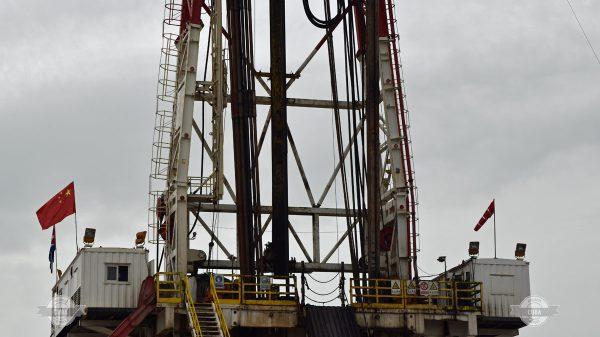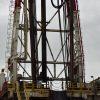In this interview, our second with Melbana Energy’s board of directors, CEO Andrew G. Purcell announces the Company’s new partnership. And the news is big in the oil world.
Since 2015, Melbana Energy Limited (ASX: MAY) has been conducting oil exploration in the area known as Block 9 on the north shore of Cuba. The Company recently announced the signing of a farm-in agreement with Angola’s Sonangol and the commencement of drilling early next year at the Alameda and Zapato high-potential sites.
Mr. Purcell became a member of the board at Melbana in 2015.
His background expertise is in investment banking at Macquarie Bank and Credit Suisse (financial structuring, capital raising, and business development). He served as a public company director for over 20 years in companies in several countries of the Asia-Pacific region. He founded Teknix Capital in Hong Kong in 2005, a company specializing in the development and management of engineering and resource projects in emerging markets.
Mr. Purcell holds an engineering degree from the Queensland University of Technology and an MBA from the University of Queensland.
In our conversation, Mr. Purcell reveals Melbana’s new partnership with Sherritt International, a Canadian corporation involved in the business of oil and gas exploration, mining, and electricity generation in Cuba.
Cuba Business Report: Can you give us an overview of Melbana’s portfolio of projects in Cuba?
Andrew Purcell:
Of the portfolio of projects we have in Cuba, our current focus is the onshore Block 9 production sharing contract that we were awarded in 2015. We have commenced preparations to drill two exploration wells early next year and are working hard to ensure that now happens as soon as possible and within budget.
Could you update us on Melbana’s activities over the last year in Cuba?
Mr. Purcell:
In December of last year, we entered a farm-out arrangement with Sonangol with respect to our Block 9 license area in Cuba. That arrangement with Sonangol saw them take a 70% interest in the licensed area in return for agreeing to fund 85% of the cost of a two-well drilling program.
So our work this year has been in advancing the formality of that agreement, advancing and receiving the permitting we needed in Cuba to undertake this drilling program, updating our estimates of the cost and undertaking international tenders for the supply of tubulars and accessories as well as for various contractors we will need to support us in this drilling program.
In December Melbana signed a farm-in agreement with the Angolan oil company Sonangol. What was the rationale behind the agreement with Sonangol, one of Africa’s largest oil companies?
Mr. Purcell:
As a small Australian oil and gas explorer, we don’t have the financial resources by ourselves to undertake work programs of the magnitude as the one we have put together and identified as an attractive opportunity in Cuba.
Our business model and one that we have successfully done many times over the years is to use our technical capability to license and then analyze an early-stage opportunity, gather all the data, put together an exploration thesis and a work program proposal, and then to present it to larger, better-funded parties who can come in and help us execute what it is we think we have identified.
We’ve done that with international oil companies over the last decade for projects all over the world. So finding a partner to help us do this again for our acreage in Cuba is business as usual for us, but having a national oil company as a partner is particularly welcome.
Sonangol is already operating in Cuba?
Mr. Purcell:
Indeed. They have their own acreage already in Cuba; however, it is an offshore block that is in the deep-water Gulf of Mexico, in Cuban waters. It is a very different cost proposition even for a large well-resourced national oil company undertaking deep water drilling in the Gulf of Mexico or indeed anywhere offshore deep-water. It is a much more expensive proposition than operating onshore.
So given where the oil and gas world has gone these past few years, the increased volatility, the tendency of large oil and gas companies to limit their exploration budgets and focus more on higher ‘bang for buck’ opportunities that may exist onshore, I think Sonangol was of that mind as well and they were looking to continue to build on the knowledge they had accumulated operating in Cuba for a number of years. They were looking for a more cost-effective way forward which our onshore Block 9 provided for them.
Has work been hindered on the Melbana drilling sites since the onset of COVID-19?
Mr. Purcell:
Not as much as you might think. Cuba—being an island state—means it’s very dependent on shipping supplies to the Island. That hasn’t really missed a beat throughout this whole pandemic.
Cuba has also had a very responsible, rapid response and management plan for COVID. It has impacted the ability of senior managers like myself to spend as much time in-country as we would have liked over the past year. But we are very fortunate to have a good team already in Cuba, a very experienced team and they have decent international communications as well so we’ve been managing to do everything reasonably well despite all the border restrictions and quarantine requirements that have been in place these past six or so months.
We would hope that changes, though, as we get closer to drilling because we will need to have some of our project management team on the ground as drilling operations get closer to commencing, but I’m happy to see that things in Cuba seem to be headed in the right direction now.
Melbana’s latest press release stated that negotiations are advanced and a “contract award is imminent” with a preferred drilling contractor. Are there any updates on this? Can you reveal the company’s name at this point in time?
Mr. Purcell:
Well, the documentation has been completed, subject to the review of the contractor’s legal team. Once we have their final comments, and assuming those final comments are acceptable to us, then the process will be to seek Sonangol’s approval, but they’ve already seen an advanced draft so I don’t imagine that’s going to be anything too contentious (if there are no further material approvals or changes). Then once the JV has approved it, given the amount involved in the award of this contract, we have to also get the approval of the administration committee for the Block 9 PSC (which is the JV participants plus CUPET).
So there are a couple of formal stages to go through, but the drilling contractor that’s been selected is Sherritt International.
Sherritt, as you know, has had many decades of experience drilling oil and gas wells in Cuba and has a very established presence in-country having drilled hundreds of wells there. It’s a good relationship we and they have built up over the years, helped by a common language and a similarity of styles between Australians and Canadians as to how we go about doing business.
I’m very pleased and excited about having this opportunity to work with them and I think it’s going to be the best opportunity we have for delivering the desired outcome in the minimum amount of time.
That’s big news!
Mr. Purcell:
It will be big news when we make the announcement.
Do you foresee drilling at Alameda-1 to begin any earlier than the mid-Quarter One, 2021 projection date (equipment delivery occurring on schedule and COVID-related travel restrictions easing)?
Mr. Purcell:
Probably not. It mostly depends on the manufacturing and shipping times of tubulars, and they are the critical part for the commencement of drilling operations. We may go a month earlier if everything goes swimmingly. But given the COVID world, given the end-of-year holidays which people tend to take between Christmas and New Year’s in our cultures at least, allowing for the noise around all that, my gut feeling is that it is unlikely that we will improve significantly on that date but it would be welcome if we could and we are ready.
Why is Block 9 a major opportunity for Melbana investors?
Mr. Purcell:
Well, the northern production zone of Cuba is a prolific producer of hydrocarbons. It extends a little from the west of Havana all the way to Varadero, and that production zone extends into Block 9. And in Block 9 there has been evidence of oil in place. There is the Motembo oil field in Block 9, which was the first oil field discovered in Cuba back in the late 1800s. In fact, the tar from the Motembo oil fields is what paved the streets of Manhattan. It’s a long-established oil zone.
There are also previous exploration wells that have been drilled, several of which have discovered hydrocarbons and flowed them to the surface. Just as importantly, Cuba typically has a reputation for producing a heavier type of crude because it produces in very shallow zones. These wells in Block 9 that were drilled deeper recovered a much lighter crude so the opportunity for our investors participating in this program is not only are we going into a proven hydrocarbon zone that has had previous discoveries and evidence of oil being in place, but there is the potential from previous evidence to find a much lighter oil which would be far more valuable and far easier to recover than the heavier crude typically found in Cuba.
When do you see that “eureka day?”
Mr. Purcell:
Well, that first well is designed to test three different targets, so from the moment we commence drilling, there is the potential to intercept hydrocarbons. To reach the total depth and the primary target will take, we estimate, about 75 days.
So perhaps one month after we have been drilling, we will be in that first zone that we wish to test and that may be the earliest time at which we will be able to say something about what it is we found.
Cuba Business Report: Thank you so much for this opportunity to see you and speak with you again.

T.K. Hernández is co-founder and editor at Cuba Business Report. Her work has been published in various online news media publications. Hernández has supported fundraising for Cuba’s last two hurricane disaster relief campaigns and is a member of the Canadian Network on Cuba. She is also a member of The Writers Union of Canada, and ACES International Alliance of Editors. Ms. Hernández is the author of three books, most recently, “The Cuba Interviews: Conversations on Foreign Investment and Economic Development,” (Palgrave Macmillan, 2023).












